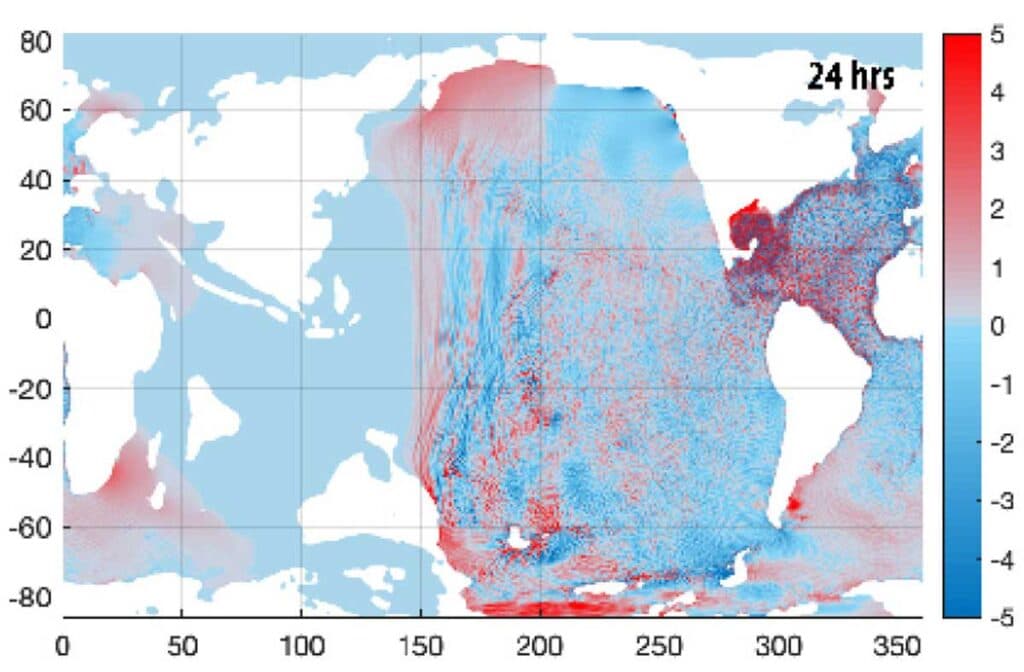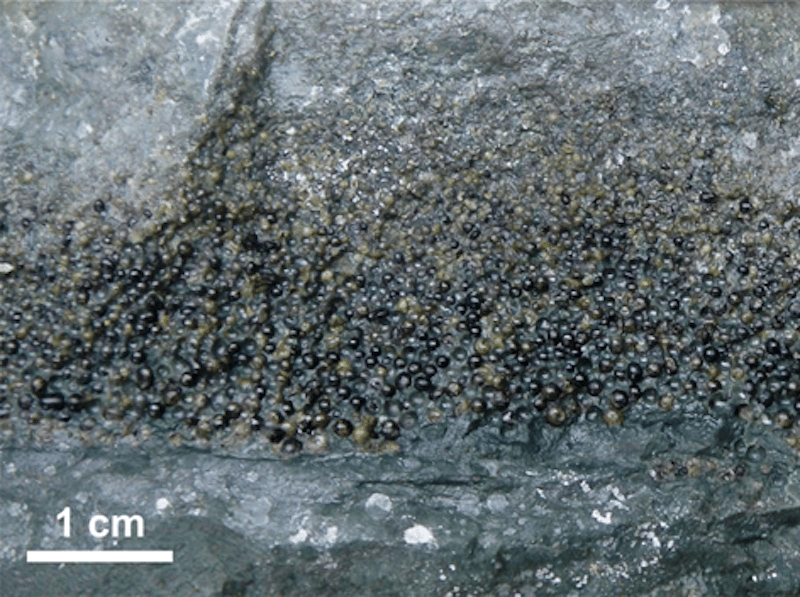One of planet Earth’s single worst days ever occurred around 66 million years ago, when a huge asteroid slammed into Earth and wiped out most life, including the dinosaurs. Now a pair of new studies has identified more evidence for just how bad things got, as the impact triggered global tsunamis almost a mile high and mega-earthquakes that rumbled for months afterwards.
The Cretaceous period came to an abrupt end when a 10-km (6.2-mile)-wide asteroid (or swarm of asteroids, or maybe a comet fragment) smashed into what is now the Yucatan peninsula in Mexico. This is known to have triggered a cascade of environmental disasters including earthquakes, tsunamis, volcanic eruptions and wildfires around the world. Oceans became too acidic for many lifeforms, and huge amounts of soot and rock were blasted into the atmosphere, blocking out the Sun for as long as 18 months. That disrupted photosynthesis, killing off plants and causing the food chain to collapse.
Ultimately, the event spelled doom for around three quarters of all life on Earth, most famously the dinosaurs but also 93% of mammals and most marine life. Increasingly, scientists are finding specific evidence of what happened in the immediate aftermath of the impact, including a mass grave of fish that were flung out of water and choked to death in molten glass rain. The two new studies have found further evidence of the destruction that followed.
Super tsunamis

Range et al. in AGU Advances, 2022
The first, led by scientists at the University of Michigan, produced a global simulation of the tsunamis that followed the impact, and backed it up with analysis of geological records from 120 sites around the world.
The simulations were built on data from previous studies – it modeled an asteroid 14 km (8.7 miles) wide, traveling at 43,200 km/h (26,800 mph), which struck granitic crust covered with thick sediments and shallow ocean. From this, the team could track the waves produced in the minutes and hours after impact.
Within the first three minutes, a wall of water an astonishing 4.5 km (2.8 miles) high was formed from ejected material, which quickly fell back to the surface. Ten minutes after impact, a ring-shaped tsunami stretching 1.5 km (0.9 miles) high began to sweep across the ocean.
After one hour, the tsunami had passed from the Gulf of Mexico into the North Atlantic Ocean, reaching the Pacific after four hours. By the 24-hour mark, the waves had essentially circled the globe, across the Pacific from the east and the Atlantic from the west to meet in the Indian Ocean from both sides.
These simulations were backed up by analysis of geological records. The team examined the sediments deposited around the K-Pg boundary at the end of the Cretaceous period, and found large numbers of sites with interrupted boundaries in the North Atlantic and South Pacific oceans, indicating the tsunamis hit these areas the hardest. In contrast, the South Atlantic, North Pacific, Indian and Mediterranean oceans had the fewest disruptions.
“This tsunami was strong enough to disturb and erode sediments in ocean basins halfway around the globe, leaving either a gap in the sedimentary records or a jumble of older sediments,” said Molly Range, lead author of the study.
But of course, the effects would linger for much longer.
Mega-earthquake

Hermann Bermúdez
The second study provides evidence of a massive earthquake that shook the planet for weeks or even months after the initial impact. Geologist Hermann Bermúdez examined outcrops in Colombia, Mexico and the US that preserve the K-Pg boundary in detail.
On Gorgonilla Island, Colombia, about 3,000 km (1,865 miles) southwest of the impact site, Bermúdez found that layers of mud and sandstone showed signs of soft-sediment deformation. This he attributes to shaking from earthquakes immediately following the impact.
However, there are also signs it kept rumbling longer. At the boundary, he also found a layer of spherules, tiny beads of glass that are a smoking gun for asteroid impacts. The heat and pressure from an impact melts and scatters material from the crust into the atmosphere, where it rains back down as glass.
It would have taken weeks or months for this spherule layer on Gorgonilla Island to form, given it had to settle around 2 km (1.2 miles) down to the ocean floor. And yet, this layer was also full of faults and deformation, indicating the earthquakes kept shaking the ground for that long after impact.
In the US sites, Bermúdez found similar faults and cracks that likely arose from the mega-quake, while sites in Mexico showed signs of liquefaction, which occurs when strong shaking makes watery mud flow more like a liquid.
Bermúdez went on to estimate that the earthquake would have released around 10^23 joules of energy. That’s about 50,000 times more energy than the magnitude 9.1 earthquake that struck the Indian Ocean in 2004.
Together, these two studies help fill in more vivid details about that truly awful day some 66 million years ago.
The tsunami study was published in the journal AGU Advances, while Bermúdez will present his findings on the mega-quake at a Geological Society of America (GSA) meeting in October. The researchers on the first study describe their work in the video below.
Dinosaur-killing asteroid triggered global tsunami
Sources: University of Michigan, GSA
Source of Article